How to Prevent Knee Injuries on the Job and Choosing the Right Knee Pads for Work
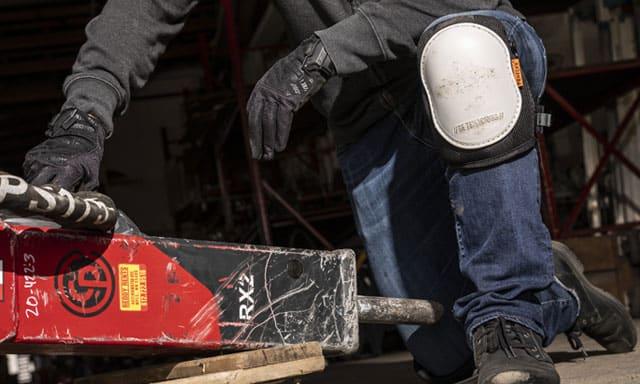
Every time you take a knee it takes a toll—you just might not know how much until it’s too late.
Some of the most common workplace knee injuries happen little by little, an accumulation of every crouch, squat and kneel. They’re not the instant career-ending blowouts you see in sports, but they can force an early retirement all the same.
Here's how to identify, prevent and protect this valuable and vulnerable part of your body from cumulative damage.
BASIC KNEE ANATOMY
The largest joints in our body are complex and critical, the place where the three main bones of the leg (femur, tibia, and fibula) meet and are protected by the kneecap (patella). Large ligaments hold each knee together, and tendons attached to the bones allow muscles to extend and flex the lower leg. Cartilage facilitates the movement of the bones where they meet and, along with fluid-filled bursa sacs, cushion the knee.
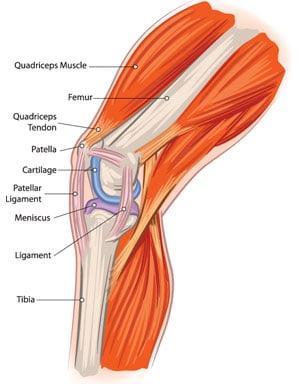
Knees can be temporarily or permanently damaged by dynamic, athletic actions such as a twist, a hard plant, or a fall, but static stresses -- more common in the workplace -- can also lead to disability. Sustained pressure on the cartilage or bursa can be very painful, especially when paired with osteoarthritis or other ailments associated with aging or overuse. Concentration of pressure on a small part of the knee, such as kneeling or pressing against very hard surfaces, can be distracting enough to interfere with a worker’s concentration and productivity.
COMMON KNEE INJURIES FOR WORKERS
Carpet layers, masons, baggage handlers, tile setters, carpenters, and other trades do plenty of hard work at or near ground level. In some positions, those knees support a majority of their body weight in a very different way than while standing. These workers don’t want to be distracted by pain, discomfort or concerns about long-term problems. Tasks that involve frequent stooping, kneeling, or squatting increase your risk of developing bursitis, tendinitis, or osteoarthritis of the knee.
But again, the signs of these injuries are often overlooked since the debilitation is so gradual.
OSTEOARTHRITIS
Usually occurring in people over 50 (but certainly earlier, too) osteoarthritis of the knee affects the bones, the cartilage (cushion between the bones), and the synovium (produces lubrication, oxygen and nutrients) in the knee joint. When the protective gap between the bones starts to wear down, bone meets bone and pain meets your daily routine.
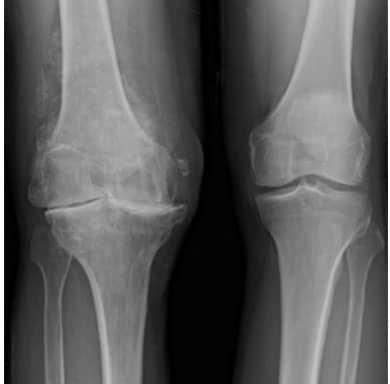
SYMPTOMS OF OSTEOARTHRITIS
There are four different stages in the progression of osteoarthritis.
Stage 1: You'd never guess anything was amuck. Knee feels fine. X-rays look normal. But there may be some cartilage damage and small lumps of bone (aka osteophytes) growing on the knee.
Stage 2: You start noticing a little stiffness and pain as the cartilage continues to thin and osteophytes continue to grow. But hey, it's probably just temporary, right? Must be the weather change or something. Your doctor, however, would notice damage on X-rays even though the bones are not rubbing or scraping against each other yet.
Stage 3: Those benders aren't getting any better. Run of the mill activities leave you moving and feeling like the tin man. The protective gap between bones is noticeably more narrow on x-rays and inflammation sets in.
Stage 4: Whatever protection your thinning layer of cartilage was providing has now given out to intense bone-on-bone pain, swelling and stiffness. At this point, surgery may be your only answer.
PREPATELLAR BURSITIS AKA "MINER'S KNEE"
Also known as preacher’s knee, beat knee, carpet layer's knee, housemaid's knee and rug cutter's knee, it’s a nuisance by any name. Prepatellar bursitis is caused by pressure that comes with constant kneeling, which irritates the bursa (a small protective sac of fluid in front of the knee). And though it may have more aliases than a mobster on the FBI Most Wanted list, it’s signature swelling makes it hard to hide.
Prepatellar bursitis can also be caused by a bacterial infection through a scrape or puncture wound that allows bacteria inside the bursa sac. Though less common, septic bursitis is more serious and needs to be treated with more urgency.
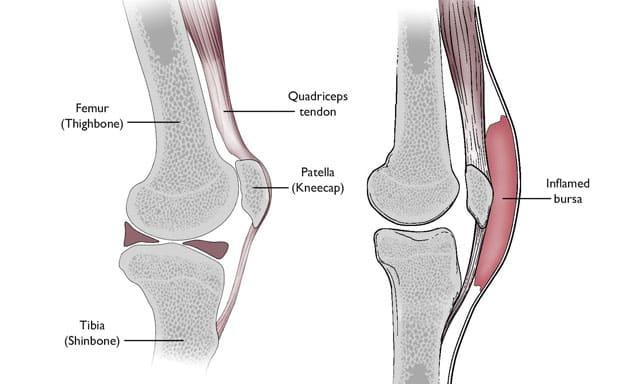
SYMPTOMS OF PREPATELLAR BURSITIS
Swelling and pain with movement. More activity can cause more swelling and more pain. Range of motion typically isn't an issue as it is with osteoarthritis. In septic cases, the knee cap becomes red and warm to the touch.
Non-septic bursitis can be treated with time (a few weeks), ice packs and anti-inflammatory drugs like ibuprofen. In serious cases, fluid may be drained to speed things up.Treatment for septic bursitis can range from antibiotics to removal of the bursa in severe cases.
WHAT TRADES ARE MOST AT RISK?
Just as certain sports are associated with a higher incidence of knee injuries, certain trades such as floor layers, carpet layers, tile setters and roofers have disproportionate rates of knee injury exposure and workers’ compensation claims compared to construction workers in general. These workers may spend up to 75 percent of their time on their knees.
Consider: The U.S. Mine Safety and Health Administration (MSHA) estimates that half of all cumulative workplace knee injuries are recorded by low seam miners who work on their knees in cramped conditions.
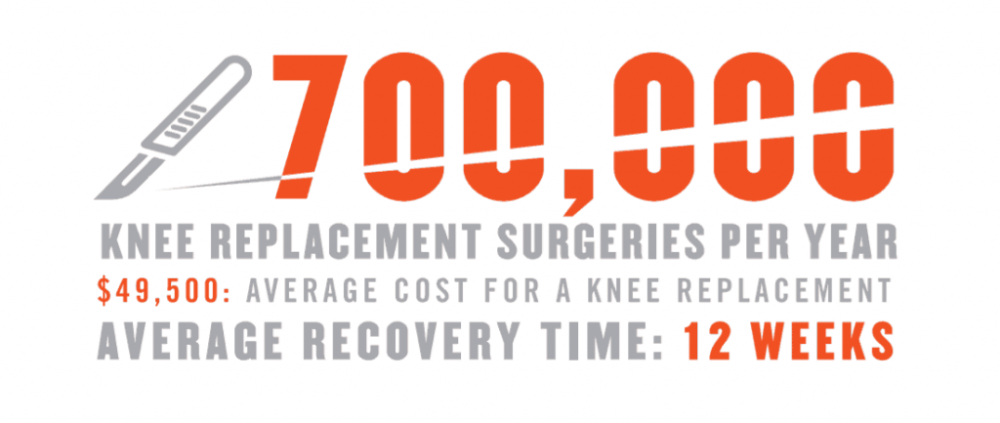
PREVENTING CUMULATIVE WORKPLACE KNEE INJURIES
Solutions for preventing and mitigating knee damage and pain include the two mainstays of preventative health: diet and exercise.
DIET + EXERCISE
Every pound of excess weight exerts about 4 pounds of extra pressure on the knees, while moderate exercise can help the joints stay flexible, strengthen the muscles that support the knees, and reduce the risk of many health conditions.
WORK SMARTER
Look for ways to adjust the work to fit the worker, like raising work off the ground to limit kneeling, squatting, and contact stress.
Other important considerations include (courtesy of OSHA Oregon):
- Can you plan your job so equipment is available to use, such as a power stretcher to lay carpet instead of a knee kicker?
- Can you add an extension on your tool so you can work at waist height instead of kneeling?
- If you do have to kneel, wear knee pads and take micro breaks of 10-20 seconds to extend your leg and allow the knee to return to resting position.
CHOOSING THE RIGHT KNEE PROTECTION
Workers who spend a good deal of time in the kneeling position put 89 percent of their body weight on a small surface area. The rationale for using knee pads is to protect the knee by distributing your weight over a larger surface area and reduce the force passed on to soft tissue.
SHELL/CAP
Pro-grade standard knee pads usually incorporate some type of protective shell, analogous to the sole of a shoe. The shell’s job is to protect from hard or sharp objects, such as rocks, nails, debris, or even bumps in the floor. Depending on the floor’s surface, desirable features could include traction or slip- resistance (roofers); water- or chemical-resistance (custodians and cleaning crews); or non-marring materials (tile installers and finish carpenters). That said, some workers may actually prefer smooth, easy-sliding shells that allow them to scoot around or across certain work surfaces without crawling.
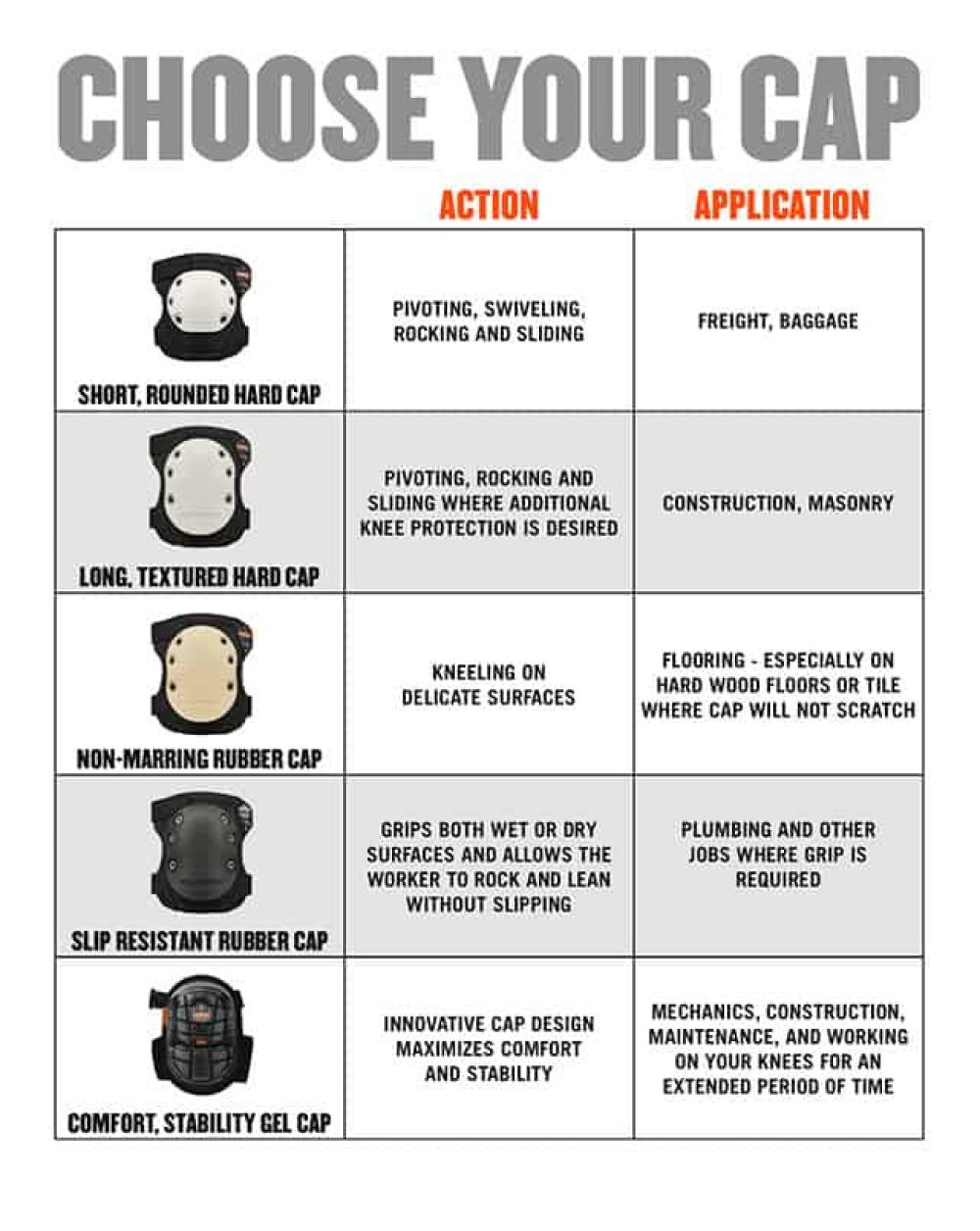
STRAP
The new generations of knee pads also offer more choices for attachment to the worker’s knee and leg – a common source of user complaints. Straps that are too tight or feel funny can restrict circulation and cause other problems.
Whether hook-and-loop fasteners, buckles, elastic straps, etc. are used, knee pads should fit the task and the worker. Worn all day, or in challenging conditions, they need to be secure and may need to fit over cold weather or other types of protective clothing. For intermittent use, the straps should be easy on/easy off. For folks on the go, the straps may need to articulate for easy walking as well as kneeling. Hinged knee pads place the top strap higher on the thigh, taking it away from the back of the knee, which can cause discomfort when kneeling or walking. The hinge design offers more flexibility and helps prevent workers from crawling out of the front or spilling out of the side of their knee pads.
PADDING
High-quality knee pads should conform to the shape of the knee as they move and change position. Old-school knee pads provided a slightly softer surface to kneel on, but concentrated pressure on limited areas.
Shaped knee pads with foam lining, gel sheets, or injected gel materials, are designed to surround the knee joint, conform to and cradle it, and most importantly, stabilize it when pressure is applied. The padding is designed to distribute pressure across the entire knee area, as well as to absorb some of the impact associated with moving around, shifting weight when changing positions or “walking” on your knees. Gel padding is typically considered the gold standard because of its ability to conform and support without getting compressed. But gel tends to be heavier than foam. However, where foam is lightweight, it can also compress over time, reducing its effectiveness. Some knee pads use a combination of both gel and foam for lighter weight cushioning and support.
SPECIALTY KNEE PADS
Knee pads come in a variety of designs, shapes and materials to be worn for a variety of kneeling work. But certain applications or jobs require a more specialized knee pad. Leather knee pads are a good choice for working around sparks/slag/fire since leather won’t melt. Some knee pads feature a shin guard that extends further down the leg to protect the shin from impacts and pressure while kneeling. Hinged knee pads feature some sort of hinge design above the knee cap to allow the knee pad itself to flex as you move. Hinged knee pads are especially helpful for those who aren’t stationary when they kneel. The hinge design bends with the knee to prevent workers from crawling out of the front or sides of their knee pads when they’re moving around (think folks like underwing airline workers).
KNEELING PADS
Knee pads stay with the worker wherever they go: they are essentially portable personal padding/protective equipment (PPPPE!). But sometimes, they just don’t work in a specific situation or are not what workers prefer. It may be possible to pad the kneeling surface instead of the knees.
Kneeling pads, conversely, are typically thick, padded accessories that workers take with them. Often small and portable for controlling localized pressure, they can also be used to cushion elbows, shoulders, hips, and other body parts when working in tight, constrained, or twisted postures. That’s equal opportunity comfort! Larger versions can be used to provide whole-body support, and are comparable to anti-fatigue mats for feet and legs. They can be staged near areas where regularly used and shared by a number of employees who work there.
KNEE COMPRESSION SLEEVES
If the knee dogs are already barking, you might need a little extra support—that’s where compression sleeves come in. A knee compression sleeve provides comfortable relief from pain and accelerates injury recovery by compressing the joint to improve blood flow and reduce swelling without inhibiting full range of motion. Sure, these may have been popularized by the sports world, but you don’t need to be LeBron or Serena to reap the benefits. A low-profile knee support fits easily under clothes for all-day pain relief in any work (or play) environment.
Padded Knee Sleeves
In a classic case of addition by subtraction, padded knee sleeves liberate knees from the twists, tangles and tomfoolery of knee pad public enemy #1––straps. A crossover of a knee sleeve and a traditional knee pad, these slide-on sleeves offer you the best of both worlds in terms of comfort and protection. The low-profile design fits underneath clothing and shorts with silicone grips and stretchy spandex material keeping the cushion right where it should be all day long.
PROFLEX YOURSELF BEFORE YOU WRECK YOURSELF
Modern surgical techniques, reflexology, and a variety of drugs can help treat knee pain when it starts interfering with work, but the less painful approach for your workers’ knees (and your bank account) is to invest in quality knee pads that will keep them pain-free and productive for the long haul.

